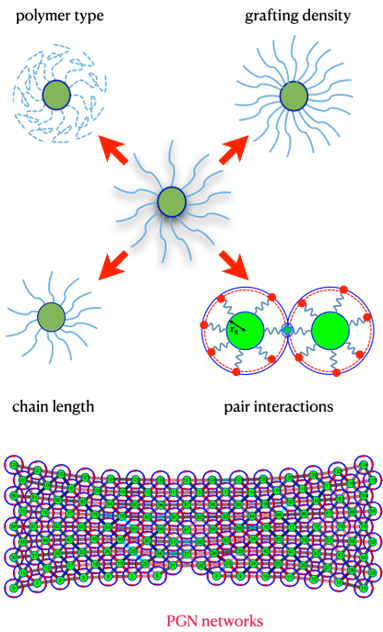 | Chemical Engineering
| Chemical Engineering
“Exploring soft matter using hard science – Building sophisticated tools for probing multicomponent material systems using multiscale simulations.”
Physical and chemical properties of material systems depend on the underlying microstructure and hierarchy of interactions associated with the constituents of the system. Our research is focused on developing tools to study the intricate connection between hierarchical structure, interactions, and the resulting material properties in soft matter systems.
1.Polymer Theory and Simulations: We employ concepts from mechanochemistry, self-consistent field theory and polymer physics to develop mathematical models and multiscale simulations. The models are used for computational design of advanced materials.
2.Novel Nanocomposites: We employ concepts from mechanochemistry, self-consistent field theory and polymer physics to develop mathematical models and multiscale simulations. The models are used for computational design of advanced materials.
3.Rheology of multicomponent systems: We study structure-rheological property relationships in multicomponent systems with interactions spanning multiple length and time scales. The studies are employed for designing mechanomutable materials.
4.Biomimetics: We translate principles of design in biological systems into mathematical models for design of novel materials with desirable properties. We are particularly interested in computational design of self-healing and stimuli-responsive smart materials.

1. Iyer, B. V. S., Effect of functional anisotropy on the local dynamics of polymer grafted nanoparticles, Soft Matter,18, 6209-6221 (2022).
2. Kadre D. and Iyer, B. V. S., Modeling Local Shear Dynamics of Functionalised Polymer Grafted Nanoparticles, Macromol. Theory. Simul. 2100005 (2021).
3. Iyer, B. V. S., Yashin, V. V. and Balazs, A. C., Harnessing Biomimetic Catch Bonds to Create Mechanically Robust Nanoparticle Networks, Polymer, 69, 310-320 (2015).